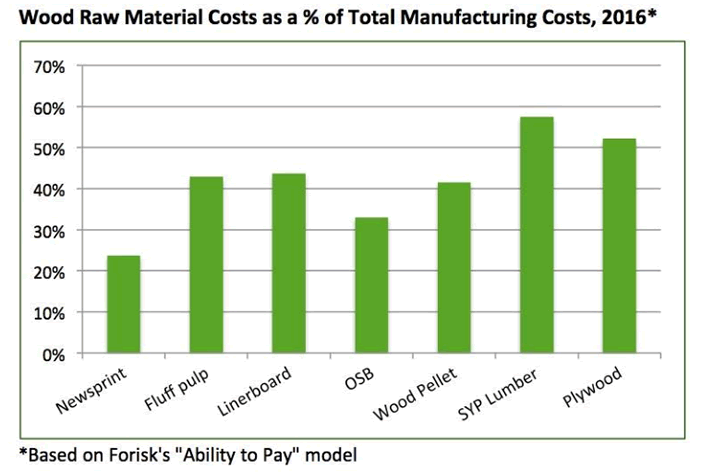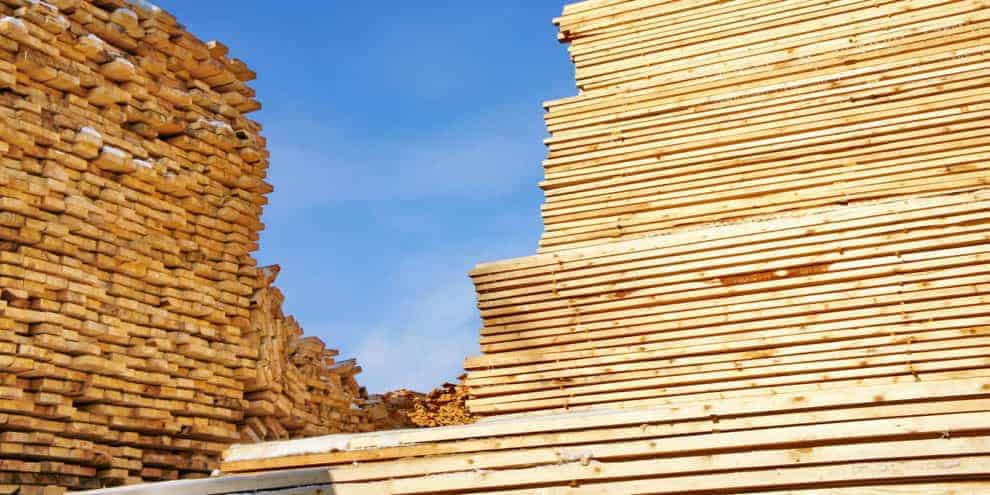Some markets are more important than others for timberland investors and forest managers. While timberland owners sell logs to mills that make poles, paper, and panels, the markets and manufacturers that drive the forest cash flows and returns needed to justify reforestation and investment produce lumber. Softwood sawmills consume more grade logs than all other North American grade markets combined, and the value of these logs exceed any other market for stumpage or chips. U.S. markets alone consumed over 44 billion board feet of softwood lumber in 2015. Still, it helps to know what wood is worth to all end markets, including and beyond lumber.
Softwood Sawmills in North America
Regardless of the macroeconomic assumptions for housing starts, specific mills in specific markets must produce the boards. Are they out there and ready to go? Where? For softwood grade markets in the U.S. South, U.S. North, U.S. Pacific Northwest and Canada, we aggregate mill-by-mill analysis with assessments of announced capacity changes to estimate total available lumber capacity.
For North America, critical analysis includes Canada’s softwood lumber industry. What is Canada’s ability to manufacture and export softwood lumber to the United States? And what is the status of Canada’s domestic housing markets? Critically in 2016, Canada housing starts softened, building homes at the lowest rate since 2013. This freed up softwood lumber volumes for export to the U.S. Still, the physical facts of Canada’s softwood sawmill industry have changed, capping its ability to produce and export softwood lumber. Unless Canada reopens old mills or builds new ones, Forisk’s ongoing research indicate that Canada’s maximum softwood lumber production, assuming all open and idled mills operate at 100%, barely hits 30 billion board feet, or nearly 20% less than ten years ago.
Forest Industry Economics
For timberland investors, the value of a tree is determined by the returns on the capital committed to owning, growing and marketing the tree. For manufacturing firms that rely on wood as a raw material, value depends on the profitability of selling the finished products they produce. Forisk’s research into the forest product industry’s “ability-to-pay” for wood raw materials speaks to this value, and the profitability of markets that use the timber products sold by timberland investors. The economics of the forest products industry remind us that timber raw materials go into products with widely varying margins.

Wood varies widely as a percent of total manufacturing cost across products. Given manufacturing and wood costs as of mid-2016, sawmills and plywood plants have a higher percentage of costs associated with wood raw materials, followed by wood pellet plants and fluff pulp facilities (see figure). Changes in relative pine grade-to-pulpwood prices and yield assumptions – the tons of wood required per unit of finished product – are critical to this analysis across mill types. While sawmills usually have higher percentages of costs associated with wood raw materials, improving yields, greater market shares held by lower cost producers, and relatively low pine sawtimber prices regionally reduced this percent for now.
This content may not be used or reproduced in any manner whatsoever, in part or in whole, without written permission of LANDTHINK. Use of this content without permission is a violation of federal copyright law. The articles, posts, comments, opinions and information provided by LANDTHINK are for informational and research purposes only and DOES NOT substitute or coincide with the advice of an attorney, accountant, real estate broker or any other licensed real estate professional. LANDTHINK strongly advises visitors and readers to seek their own professional guidance and advice related to buying, investing in or selling real estate.










Add Comment